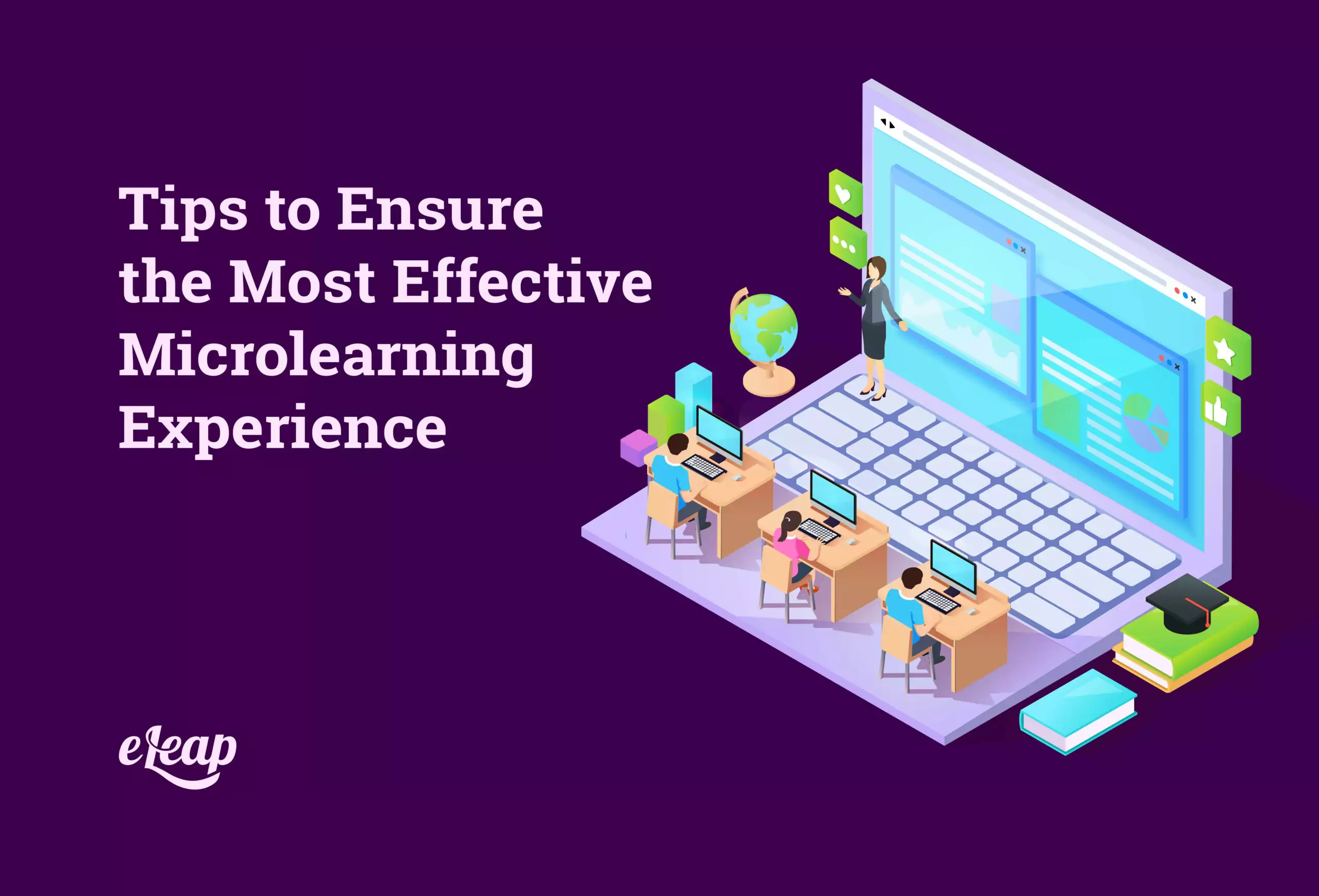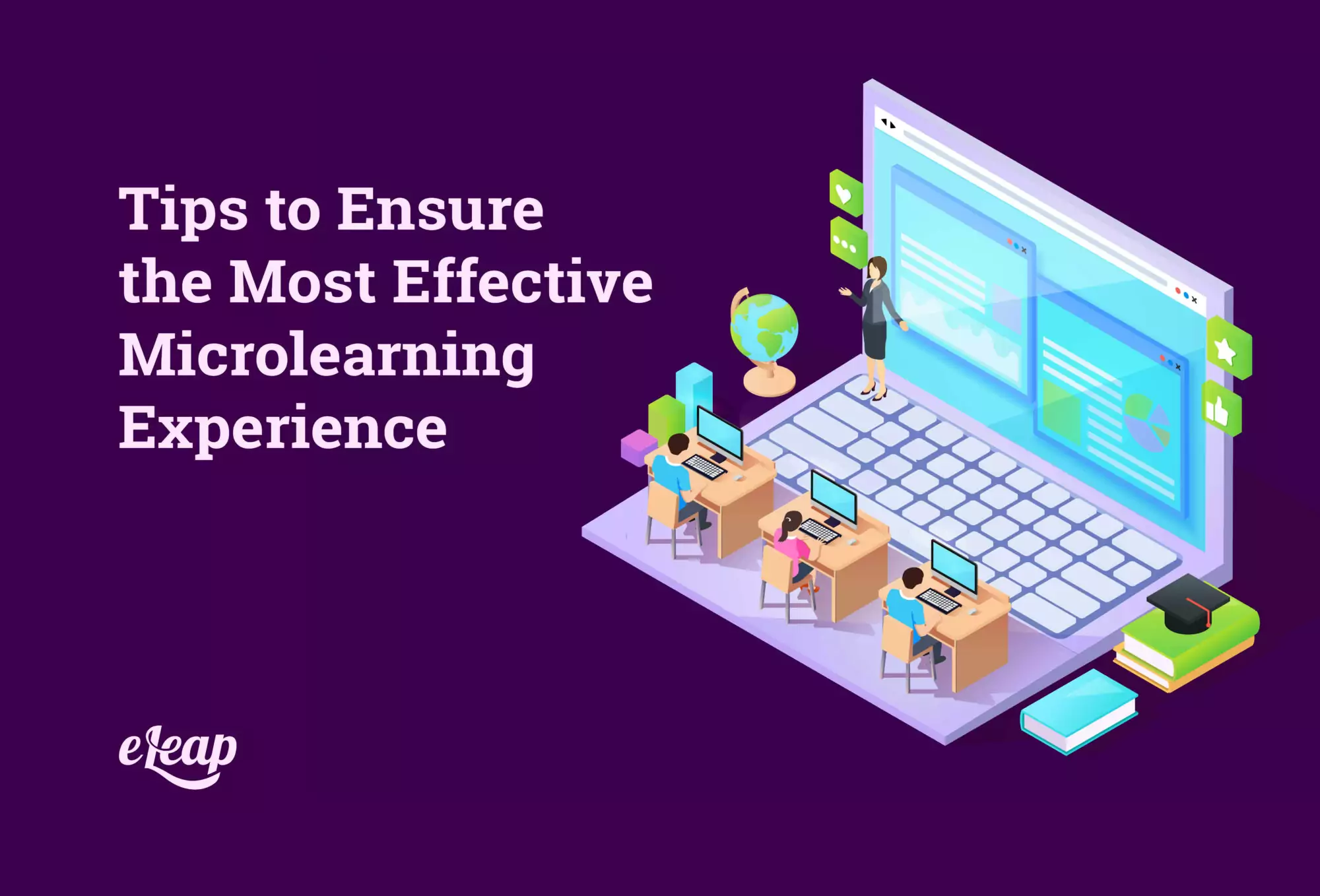Tips to Ensure the Most Effective Microlearning Experience

By now, you’ve probably heard of microlearning. It’s a pretty important trend in the eLearning industry. However, you might be in the dark about how to create the most effective microlearning content. In this guide, we’ll clear the air a little bit with critical tips to ensure the most effective microlearning experience.

What Is Microlearning?
Not sure what microlearning even is? That’s to be expected. There are many competing definitions out there, but we’ll sum everything up neatly for you.
Microlearning is characterized by lessons that are short, focused, carefully curated, able to stand on their own, convenient for your learners, and easily accessed when and where it’s right for your learners.
With that out of the way, let’s get right to the tips to help you create the right learning experience.
Microlearning Creation Tips
Microlearning lessons are short, to the point, and actionable. However, while they can stand alone quite well, they should tie into your overall initiative. Think of how Duolingo works for users – you get short lessons that take about 10 minutes to complete. However, when done over time, the user comes out of it with the ability to speak another language.
Jump Right In
Take a cue from Duolingo and other masters of microlearning. Don’t go for lengthy introductions. Jump right into the meat of things.
There’s a lot to be said for getting right to the point, including faster course completion times and better learner retention and engagement rates. You literally have mere minutes to grab the user’s attention, so don’t waste them with an introduction that’s not really necessary.
Show Them How
Interactive content is the key to successful microlearning experiences. Spend less time discussing unrelated things and more time showing learners what needs to be done. Augment that with interactive experiences that allow them to put newly learned skills to the test in unique, engaging ways. Combine text, imagery, video, animations, and other content to show and not tell.
Focus on Performance
Each microlearning lesson should be laser-focused on a specific skill or piece of knowledge. It should be contextual, though – it must relate to what has come before and/or what comes after. You’re building a skillset, after all.
For example, suppose you’re creating content that teaches learners how to deal with anxiety. A single microlearning experience isn’t going to do the trick. However, you might introduce a single important element (breathwork, for instance) and then build on that throughout multiple lessons, culminating with a lesson that ties everything together.
Know Your Audience
Who is the microlearning content created for? This should guide many aspects of the creation and design process. For instance, you would take a very different path if you were creating microlearning for first graders as opposed to content designed for shipping managers in Fortune 500 companies.
Remember that your content should be user-focused, which means you need to have a very good idea of who those users are, what their expectations are, and the best ways to communicate with them.
Know Your Brand Voice
Just as you should know your audience, you also need to know your brand and its voice. This helps maintain consistency across your lessons while reinforcing how those lessons connect with the organization.
For instance, if you look at Apple, you’ll find that the company communicates in similar ways across all mediums – tech-savvy, direct, friendly, and helpful.
That’s true whether you’re browsing the website, checking out the latest product offering email, or watching one of the company’s annual events. You must do something similar for your own organization.
Keep Repetition to a Minimum
Just as there is little room for introductions or superfluous information, there’s also limited bandwidth for repetition. Each lesson should be balanced and highly focused. However, there is a lot to be said for having periodic refreshers and lessons focused on assessing the learner’s progress across multiple other lessons.
However, these should still be brief lessons, so you cannot create massive quizzes or lengthy assessments. If you’re interested in the data these assessments and tests can provide for analytics, use shorter mini-assessments at preset stages in the learner journey and then have the results of those populate your analytics to track learner progress and success.
Keep It Informal
No matter what your organization’s focus might be or your industry, microlearning is a personal journey. As such, you need to maintain an informal tone throughout. The goal is to encourage learners to engage and complete lessons, and a conversational tone is the best way to do that, particularly when you couple it with the right content types and an effective design.
Focus on Mobile
To be clear, there’s no reason that your microlearning content must be only available via mobile devices. It has a place within other aspects, too. However, its very nature makes microlearning eminently well-suited to mobile devices.
There are other benefits to going the mobile route, as well. For one, it encourages learners to complete lessons anywhere they might want, whether that’s the office or at home. For another, it makes your content that much more accessible. When employees don’t have to take time out of their day to head to the training room in HR, log into a workstation and sit there for a couple of hours, they’re much more likely to be enthused about their learning journey.
Putting It All Together
Microlearning offers many benefits. Learners can complete lessons faster and build mastery in a very short time. They’re not distracting and, because they’re short and to the point, learners often find that they are more engaged than would otherwise be possible. Progress increases, retention improves, and learners can put their skills to work on behalf of the organization in less time. Those are all mission-critical benefits.
However, it is still critical to have a modern LMS. The right learning management system can make it easier to create microlearning content and then track user progress.